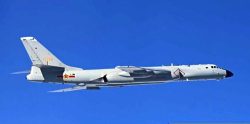
The Health, Labor and Welfare Ministry in Chiyoda Ward, Tokyo
16:12 JST, August 25, 2024
Tokyo (Jiji Press)—Japan’s welfare ministry plans to strengthen support for efforts to introduce robots to improve work efficiency at nursing care facilities in fiscal 2025, Jiji Press has learned.
The ministry plans to add to the list of equipment covered by its subsidies devices for nutrition management and instruments for care of people with dementia. It will include related expenses in its budget request for fiscal 2025.
The nursing care industry is facing a chronic labor shortage against the backdrop of an aging society. The government is working to reduce the burden on care staff while maintaining the quality of care services by utilizing robots.
However, only about 30 pct of nursing care facilities in the country introduce robots, and further promoting their use is a challenge.
Classified by the ministry as “priority areas” of nursing care include watching over care receivers, helping them bathe and offering excretion support. The ministry provides financial support of up to ¥1 million for the introduction of care robots for use in these areas.
In June, based on the needs of nursing care providers, the ministry added to its priority areas diet and nutrition management, support and care for people who have dementia and training to maintain physical and life functions. It hopes to add equipment related to these areas to the subsidy list starting in fiscal 2025.
For diet and nutrition management, the ministry expects the utilization of devices that can collect and analyze diet data and equipment that can detect erroneous swallowing while eating.
The ministry aims to support daily lives of dementia sufferers by introducing a system to let them know if there are anything that they forgot to take with them when they go out. It also hopes to spread the use of a system to create training plans to maintain both physical and mental health based on information such as data of walking.
"Politics" POPULAR ARTICLE
-

Japan to Support Central Asian Logistics Route That Bypasses Russia, Plan to Be Part of Upcoming Summit in Tokyo
-

Japan to Tighten Screening of Foreigners’ Residential Status by Providing Information of Nonpayment of Taxes
-

Chinese, Russian Bombers Flew Unusual Path by Heading Toward Tokyo; Move Likely Meant to Intimidate Japan
-

Japan Plans National Database to Track Foreign Ownership of Real Estate, Land as It Weighs New Rules
-

Up to 199,000 Deaths Estimated From Mega-Tsunami; Most Recent Occurrence Took Place in 17th Century
JN ACCESS RANKING
-

Tokyo Economic Security Forum to Hold Inaugural Meeting Amid Tense Global Environment
-

Keidanren Chairman Yoshinobu Tsutsui Visits Kashiwazaki-Kariwa Nuclear Power Plant; Inspects New Emergency Safety System
-

Imports of Rare Earths from China Facing Delays, May Be Caused by Deterioration of Japan-China Relations
-

University of Tokyo Professor Discusses Japanese Economic Security in Interview Ahead of Forum
-

Japan Pulls out of Vietnam Nuclear Project, Complicating Hanoi’s Power Plans

























